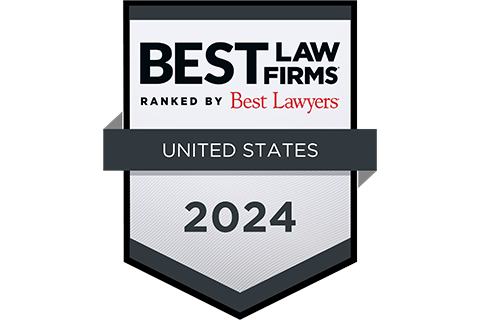Takeaways From the Proposed Patent Eligibility Restoration Act of 2023
Two proposed bills recently introduced in Congress have the potential to greatly impact the current patent litigation landscape. The bills are titled the Patent Eligibility Restoration Act of 2023 and the Promoting and Respecting Economically Vital American Innovation Leadership (PREVAIL) Act. Both proposed bills are bipartisan with the stated purpose of improving the U.S. intellectual property system, promoting innovation, and securing economic and national security interests.
In this article, we discuss the Patent Eligibility Restoration Act of 2023. (Click here to read our discussion of the PREVAIL Act.) The Patent Eligibility Restoration Act is designed to completely overhaul the law around patent eligibility. The bill proposes eliminating judicial exceptions to United States Code, title 35, section 101, which the bill says have rendered an increasing number of inventions ineligible for patent protection. Its proponents emphasize that patent practitioners and courts (including the Federal Circuit) have for years requested greater clarity on section 101 patent eligibility. The Supreme Court has so far refused to take up any cases addressing this topic since its well-known Alice v. CLS Bank ruling in 2014 that created the current legal framework for the patent eligibility analysis. The proposed Patent Eligibility Restoration Act would eliminate judicial exceptions to patent eligibility and replace them with statutory exceptions.
Currently, courts utilize the two-step Alice framework to determine whether a patent covers ineligible subject matter such that it should never have been issued under section 101. In step one, the court determines whether the claims are directed to an “abstract idea.” If so, the court proceeds to step two to determine whether the claims nonetheless include an “inventive concept.” If not, then the patent is ruled ineligible. But this framework has led to considerable confusion—particularly regarding whether any patent viewed from a high-enough lens is directed to an “abstract idea,” where step one ends and step two begins, and whether step two’s “inventive concept” improperly bleeds into a section 102 novelty or section 103 obviousness analysis. In the press release for this proposed bill, Senator Tillis’s office stated that the current framework has “led to inconsistent case decisions, uncertainty in innovation and investment communities, and unpredictable business outcomes.”
The Patent Eligibility Restoration Act attempts to reform patent eligibility by eliminating existing judicially-created exceptions and starting over from scratch. Under the proposed bill, “[a]ny invention or discovery that can be claimed as a useful process, machine, manufacture, or composition of matter, or any useful improvement thereof, is eligible for patent protection, except as explicitly provided in section 101 of title 35, United States Code, as amended by this Act.” The proposed bill amends section 101 to articulate statutory exceptions to patent eligibility under subsection (b), which includes the following exceptions:
“(b) ELIGIBILITY EXCLUSIONS: . . .
(A) A mathematical formula that is not part of a claimed invention in a category described in subsection (a).
(B) (i) Subject to clause (ii), a process that is substantially economic, financial, business, social, cultural, or artistic, even though not less than 1 step in the process refers to a machine or manufacture.
(ii) The process described in clause (i) shall not be excluded from eligibility for a patent if the process cannot practically be performed without the use of a machine or manufacture.
(C) A process that—
(i) is a mental process performed solely in the human mind; or
(ii) occurs in nature wholly independent of, and prior to, any human activity.
(D) An unmodified human gene, as that gene exists in the human body.
(E) An unmodified natural material, as that material exists in nature.”
The bill also emphasizes that section 101 patent eligibility is a distinct analysis from the novelty, obviousness, and indefiniteness requirements of sections 102, 103, and 112, respectively. In fact, the amended section 101(a) removes the word “new” from the existing opening language of “[w]hoever invents or discovers any new and useful process, machine, manufacture, or composition of matter, or any new and useful improvement thereof . . . .” And the bill directs courts to consider eligibility “without regard to . . . whether a claim element is known, conventional, routine, or naturally occurring . . . or any other consideration in section 102, 103, or 112.” This instruction will avoid the risk of eligibility rulings that appear to go beyond the reach of section 101.
The proposed bill has the potential to create more predictable outcomes when the eligibility of an issued patent is challenged. It may well lead to fewer patents being deemed patent-ineligible by the courts applying the Alice framework, which would benefit patent owners over alleged infringers. Defendants would have to utilize section 101 challenges more judiciously. And the notoriously hard-to-parse Alice terms of an “abstract idea” and “inventive concept” would no longer hold sway in the analysis, potentially allowing more informed business decisions from clients choosing whether to dispute or defend a patent’s eligibility.
But any expectation that this bill will be a panacea for eligibility litigation may be misguided. Courts will trade the Alice framework for difficult questions of first impression in applying the proposed amended section 101 in practice. For example, what does it mean for a “process” to be “substantially economic, financial, business, social, cultural, or artistic”? Subsection (b)(B) may also lead to confusion regarding whether a computer is invoked in a non-essential manner or whether the “process cannot practically be performed” without one. This could turn the section 101 analysis into a fact-intensive inquiry requiring more discovery than courts are comfortable with at this stage.
The subject matter eligibility requirements of Section 101 are foundational to what is patentable, yet they have bedeviled litigators and the courts for years. If this bill is passed, it will drastically shake up the manner in which patent infringement lawsuits are litigated.

